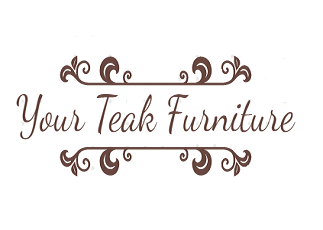Material selection is of critical importance in interior design and construction projects, and Moisture Resistant Medium-Density Fiberboard (MDF) boards have become a go-to choice among building material suppliers. As it offers superior resistance to moisture and humidity, engineered wood products like this one are invaluable in many building and design applications. MDF Moisture-resistant comes in different thicknesses (6 mm, 9 mm, 22 mm and 25 mm), offering exceptional adaptability to meet a range of applications – from demanding construction requirements to intricate details. In this post, we’ll explore its many uses and advantages, emphasizing its significance in modern construction methods.
What is MDF Moisture Resistant?
Engineered wood products such as MDF moisture-resistant are renowned for their exceptional resistance to moisture and humidity. Given this quality, MDF panels with this composition are an ideal material to utilize when regular MDF might distort or expand significantly in a given situation. Thanks to its various thickness options – 6 mm, 9 mm, 22 mm and 25 mm- they may also be utilized for interior design projects as well as heavy-duty building.
The Importance in Building Material Supplies
Moisture-resistant MDF cannot be overstated in its importance to building material supplies. It provides an adaptable, strong, and cost-effective alternative to solid woods and engineered wood products – especially beneficial in damp environments like kitchens, baths and outdoor spaces.
- 6mm MDF Moisture Resistant Board is Perfect for Deliberate Detail Work
6mm mdf moisture resistant is widely considered one of the finest choices for finely detailed work. Due to its small profile, this moisture-resistant MDF material makes for ideal backsplashes, cabinet door inserts and ornamental panels – as it offers exceptional moisture resistance even while remaining lightweight – as well as providing sturdy interior applications.
- 9mm MDF Moisture Resistant: The All-Rounder
The 9mm mdf moisture resistant finds a balance between flexibility and strength. It’s thin enough to make handling and cutting easier, yet thick enough to provide significant durability. This thickness is often used for shelves, wall paneling, and making unique furniture.
- 22mm MDF Moisture Resistant: For Heavy-Duty Applications
The 22mm MDF moisture resistant is a great option for situations that are more demanding. It works well for building bathroom vanities, kitchen countertops, and other places where a sturdy material that can tolerate a lot of weight and moisture exposure is needed.
- 25mm MDF Moisture Resistant: The Premium Choice
Premium stability and durability are provided by 25mm MDF moisture resistant, which is at the thicker end of the thickness band. It is often used in architectural millwork, high-end cabinets, and other applications where the material’s robustness is crucial. Long-lasting performance even in the most demanding conditions is ensured by this thickness.
Benefits of Moisture-Resistant MDF
Improved Stability and Durability
Moisture-resistant MDF stands out among its main advantages by being extremely durable. This material was specifically engineered to resist degradation, swelling and warping when exposed to damp or humid environments; thanks to this ability, moisture-resistant MDF installations last longer and stay looking their best. It makes an ideal material choice for bathrooms, kitchens and basements where moisture exposure may occur frequently – providing reliable long-term solutions.
Flexibility in Application and Design
The variety of thicknesses available in moisture-resistant MDF, from the svelte 6mm to the sturdy 25mm, creates a plethora of design and application options. Due to its adaptability, it may be used for a wide range of tasks, including large structural applications as well as exquisite ornamental work and furniture design. Because of its versatility, it’s the perfect material for unique projects that call for certain measurements and characteristics.
Cost-Effective Solution
When compared to other moisture-resistant construction materials and solid woods, MDF provides a more economical option without sacrificing functionality or quality. Because of its affordability, it’s a desirable choice for many different kinds of projects, especially ones when money is tight. It offers a premium appearance and feel, sometimes at a far lower price than more costly materials.
Ease of Fabrication and Finishing
MDF that’s resistant to moisture is easy to fabricate and finish, using standard woodworking equipment like saws, drills, and shapers. Its smooth surface makes it ideal for laminating, painting or veneering for creating customized finishes tailored specifically to a project’s aesthetics.
Utilizations in Architecture and Construction
Applications for moisture-resistant MDF may be found in many industries, such as:
Residential and Commercial Interiors: For cabinetry, wall paneling, and furniture.
Kitchen and bathroom: Perfect for places where wetness is present on a regular basis.
Custom Millwork: Ideal for crafting intricate moldings, trims, and ornamental pieces.
Outdoor Applications: Not meant for extended exposure to the weather, but for projects that need a certain amount of moisture resistance.
Environmental Considerations
Even though MDF is a great material option, it’s vital to think about how it will affect the environment. Reducing the ecological impact may be achieved by choosing items from vendors that use eco-friendly adhesives and sustainable forestry practices.
Conclusion
Moisture-resistant MDF is a useful and adaptable addition to the construction supply industry. It offers builders, designers, and do-it-yourself enthusiasts a dependable material that blends functionality, beauty, and affordability in a range of thicknesses to suit diverse demands. Moisture-resistant MDF will become increasingly important as design and construction evolve, further solidifying its role as one of the main players in the building materials industry. It comes in delicate 6mm and strong 25mm varieties to suit a range of projects requiring fine details or heavy-duty applications. Moisture-resistant MDF will only become more prevalent as we progress through its use for design and construction purposes, solidifying its position as one of the go-to building material suppliers.

